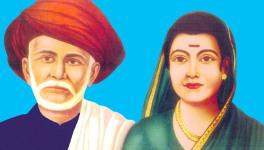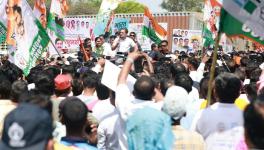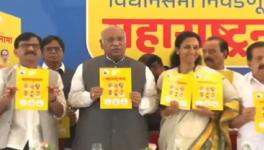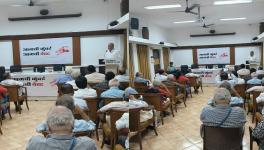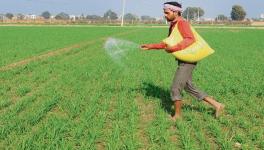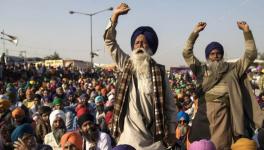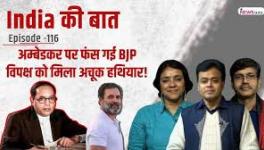M’rashtra Polls: Maratha vs OBC, Ladki Bahin, Farmers Key Issues
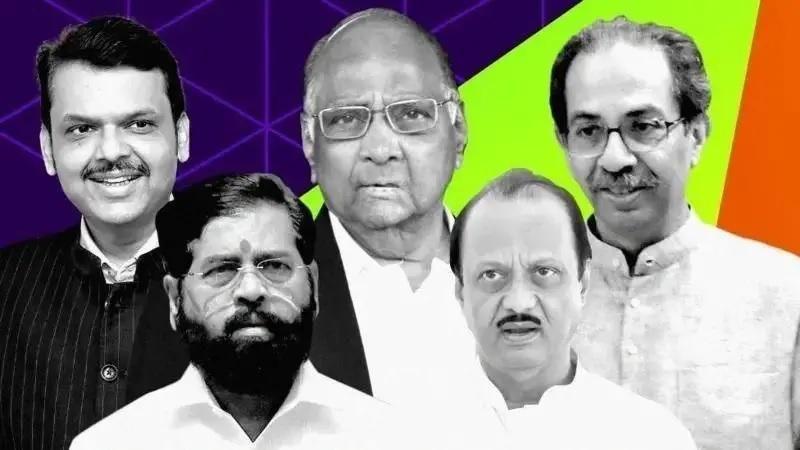
Image Credit: BBC Hindi
Like in Haryana, there are indications of a direct two-way fight in the Maharashtra Assembly elections this month. The only difference is that in Haryana there were two political parties in the fray, here there will be a contest between two alliances – Mahayuti and Maha Vikas Aghadi (MVA).
The Bharatiya Janata Party (BJP) and Congress got combined 80% votes in Haryana. Thus, the third factor was insignificant. But since the six major parties in Maharashtra are fighting in two alliances, the number of rebels is higher. Therefore, there is speculation on how much these rebels will affect the poll outcome. Apart from this, there are some key issues that may also impact the outcome.
Maratha Reservation and OBC Factor
For the past two years, Manoj Jarange, leader of the Maratha reservation protests, has been continuously demanding reservation in education and jobs for the Maratha community.
The Maratha movement has had a wide impact in the state.
Also, Jarange has made the ruling Mahayuti alliance (BJP-Shiv Sena (Shinde)-NCP) uncomfortable by opposing the government's reluctance in giving certificates to avail the benefits of reservation to the Kunbis (an agrarian marginalised community).
In the 2024 Lok Sabha elections held in May, especially in the Marathwada region, the BJP had suffered a huge blow due to the Maratha movement. It did not win a single seat in this region. Even Pankaja Munde, daughter of late BJP leader Gopinath Munde, who was contesting the elections on a BJP ticket, badly lost her traditional seat of Beed.
Notably, the Maratha community constitutes about 28% of the state’s population and has been maintaining an anti-incumbency stance, which has become a major cause of concern for BJP and its supporting parties.
Along with this, Jarang's continuous statements against BJP have further increased problems for the Mahayuti. The Maratha leader has termed BJP as “anti-Maratha”, because of which 46 Assembly seats have become a challenge for the ruling Mahayuti in Marathwada.
It is being speculated that just as a large section of the 22% Jat community in Haryana had turned against BJP, the same could happen here. To counter this, BJP has mobilised some other backward communities. But, it is difficult to say whether this will have any effect in Maharashtra, because BJP had used this strategy in the Lok Sabha elections, too, but had to suffer huge losses in the region.
However, this is an Assembly election and sometimes candidates of a particular caste can have an impact at the local level. Hence caste polarisation can happen. But the past election patterns show that Maratha vs OBC polarisation have never become that much of a factor during voting, as expected by political parties. Actually, this is because the fight for supremacy between these two communities has not been as aggressive or organised as has been seen between communities in other states.
Impact of Ladki Bahin Scheme
The ruling Mahayuti is banking heavily on this scheme. The reason for this is that last year BJP got electoral benefits in Madhya Pradesh from a similar scheme there. There are about 4.8 crore women voters in the state. About 2.3 crore women have already benefited from this scheme. In short, 45% of the total women voters are beneficiaries of this scheme. Now the question is, how will remaining 55% of the women vote-bank react to such a scheme? Then there are also what we call ‘floating voters’ among this 45% women, who are beneficiaries but are committed to other political parties. Usually, their votes generally do not get divided.
Also, the MVA (Congress-NCP(SP)-Shiv Sena(UBT)) has shown political astuteness by not opposing this scheme and announcing that it will be continued if they come to power, and the amount under the scheme would be increased.
Sympathy for Uddhav-Sharad
In the past two-and-a-half years, the state first saw the split of Shiv Sena and then NCP. The MVA is saying that the rulers at the Centre (BJP) have divided their parties, while the BJP is propagating the split happened due to Uddhav Thackeray changing sides and “deceiving the people”. This has also become a key poll issue, whose impact was clearly visible in the Lok Sabha elections when BJP alone fielded 28 candidates out of 48 seats in the state. However, BJP, which claims to be the largest party in Maharashtra, had to be settle with only nine seats in the Lok Sabha.
It is clear that one of the reasons for this huge defeat was the BJP’s image of 'break the party and rule', because of which a sympathy wave had worked in the minds of people in favour of Uddhav Thackeray and Sharad Pawar. This is likely to remain so in the Assembly elections, too, as there has been no change in the politics of the state in the meantime.
Recall that in the 2019 Assembly elections, the BJP-Shiv Sena alliance had got a clear majority. But there was a tug of war between the two parties regarding the post of Chief Minister. After that, there were many major turning points in the politics of the state.
Moreover, elections have not been held in most of the local self-government bodies, i.e. municipalities, municipal corporations and district councils and panchayat samitis, in the past two years.
The Mahayuti's argument is that a legal battle was going on over the issue of reservation which is why the polls could not be held. Despite it claiming that it wanted to hold elections and could not due to technical reasons, there has been resentment within the Mahayuti’s local leadership. Second and third rank party workers feel they have not got a chance at the local level, hence their anger matters. This is because usually the Mayor, District Council President or City President become future MLAs and MPs.
Issues of Farmers and Farming
The NABARD All India Rural Economic Survey report for t 2021-22 showed that 59% of rural households in Maharashtra are engaged in agriculture. That means a major part of their income comes from farming, and hence farming, as always, has been an important issue in the Maharashtra elections and its current plight may influence the political narrative as well as public sentiment.
Sugarcane is the most important crop in Maharashtra, which is the largest sugar producing state in the country. However, Uttar Pradesh reached the top position during the period 2024-25. The reason for this is said to be last year's drought.
It is known that there was a drought-like situation in many parts of the state during July 2018 to July 2019. Recall that the Assembly elections were held in October 2019 under the shadow of a prolonged drought.
The government subsidised fodder camps sheltering more than 11 lakh cattle in the worst-hit Marathwada region and neighboring Ahmednagar and Solapur districts, which were functioning till September-end.
The cattle were also being fed whole sugarcane, the rate of which was higher than the rate offered by the mills as fodder. The picture was no different during the Lok Sabha elections between April and May 2024. In 2023, Maharashtra had southwest (June–September) and northeast monsoon (October–December) seasons. That was followed by winter rains in January–February 2024 after which the mercury crossed 40 degrees Celsius in early March.
Row Over Fair Price of Crops
Farmers of Maharashtra, who are in the grip of drought, have not even received fair prices for their crops. Take the example of soybean sold at an average price of Rs 4,350-4,400 per quintal in the Latur market, which is much lower than the government's minimum support price (MSP) of Rs 4,892/quintal or last year's market price of Rs 4,650-4,700 per quintal. Similarly, cotton in Yavatmal is fetching Rs 6,500- Rs 6,600 per quintal, which was Rs 6,800-6,900 a year ago, and its minimum base price was Rs 7,121/quintal.
Balasaheb Dake, a farmer from Kajla village of Badnapur tehsil in Jalna district, says that in the past one year, the cost of storing cotton has increased from Rs 7 to Rs 12 per kg. He blames the ruling Mahayuti’s Ladki Bahin scheme for this, under which a monthly cash transfer of Rs 1,500 is given to women from families with annual income up to Rs 2.5 lakh.
Dake claims that due to this scheme, the number of days or working hours of agricultural labourers has reduced. As a result, there is a shortage of agricultural workers and wages have increased.
During the current Kharif season, farmers in Maharashtra have sown soybean in a record 51.6 lakh hectares. Last year, cotton was cultivated in 42.2 lakh hectares, which has come down to 40.9 lakh hectares. Also, sugarcane has been cultivated in 10.5 lakh hectares, but prices are below MSP. Abundant monsoon and rise in output may ease distress in the agriculture sector, but low crop prices and rising costs of farming are a major issue in the Assembly elections.
The Issue of Law & Order
The ruling Mahayuti alliance is also facing a dilemma due to law and order issues. The Opposition is on the front foot with regard to cases, such as the Badlapur rape case in Thane district to incidents of crimes against women.
Such is the level of crime that the government has failed to ensure the security of even the leaders of the ruling party in the state.
Apart from this, it will be also difficult for the ruling Mahayuti to tackle the issue of prices of soybean and cotton in Vidarbha, the issue of irrigation facilities, unemployment and inflation, problems of farmers. There are populist announcements in the manifestos of both alliances, yet the question is, where will they get the funds for these?
(The original article was written in Hindi and published on our Hindi website.)
The writer is an independent journalist based in Maharashtra. The views are personal.
Get the latest reports & analysis with people's perspective on Protests, movements & deep analytical videos, discussions of the current affairs in your Telegram app. Subscribe to NewsClick's Telegram channel & get Real-Time updates on stories, as they get published on our website.









